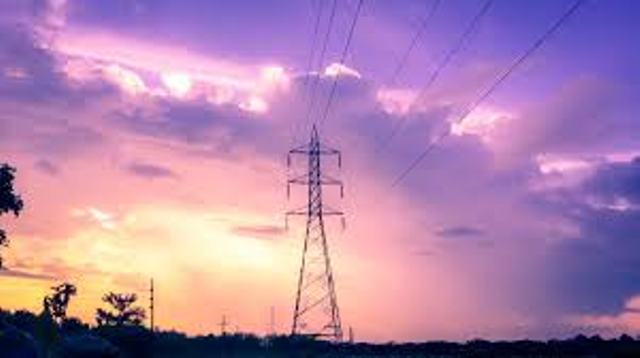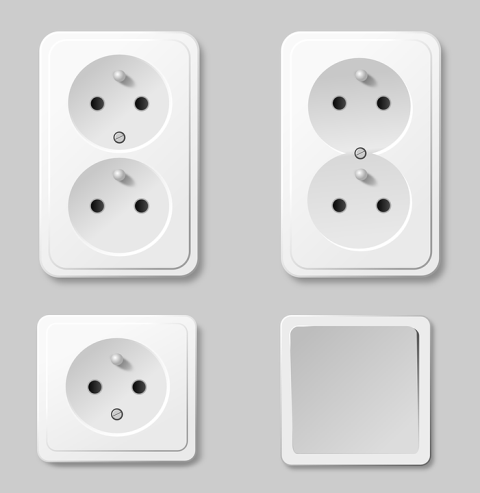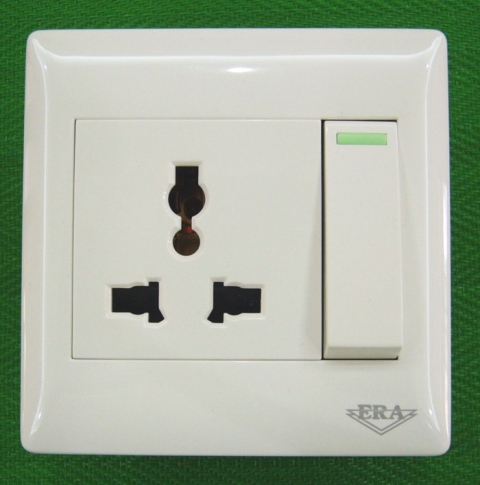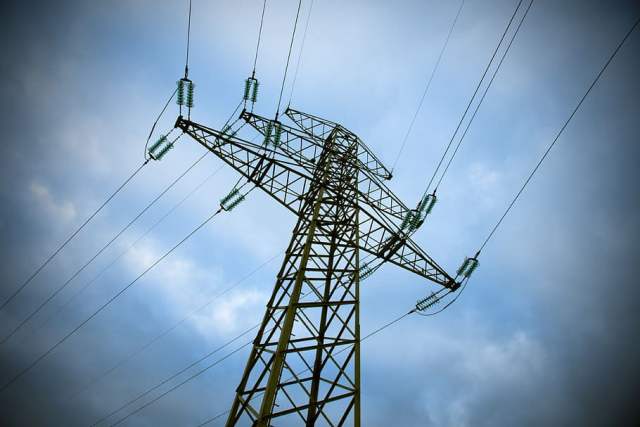The Role of Electric Current and Socket
Summary
The Role of Electric Current:
– Definition of electric current
– Current intensity
– Voltage of the electric current
– Electric power
The Role of Electric Socket:
– Role of an electrical outlet
– Electrical plug and socket
– Types of sockets
– Number of electrical outlets
– Location of electrical outlets
Definition of electric current
Electric current is the movement of electrons through a conductive material:
If this movement always takes place in the same direction, it is called direct current.
The electric current distributed by the electricity suppliers in our homes is alternating: the electrons first move in one direction and then in the opposite direction at regular intervals.
Current intensity
The intensity of an electric current is expressed in amperes (symbol: A).
It measures the amount of electricity, i.e. the number of electrons flowing through a circuit during a time interval.
The voltage of electric current

The volt (symbol: V) is the unit of potential difference or voltage.
In a pictorial way, this would correspond to the pressure of the water retained in a dam: a large potential difference in a closed circuit involves the displacement of a large number of electrons.
Power of the current
An electric current is characterized by a power, expressed in watts (symbol: W). Power is the product of voltage and current.
Power (in watts) = current (in amperes) × voltage (in volts)
This power is generally calculated for a duration of one hour, hence the kilowatt-hour unit (equivalent to 3,600,000 joules).
——————————————————————————–
Role of an electrical outlet

An electrical outlet allows you to power all your everyday electrical appliances: fridge, washing machine, coffee machine, vacuum cleaner, television, etc., by connecting them to the electrical network.
Male and female electrical socket
The socket is recessed into the wall. For safety reasons, the contacts are made at the bottom of circular holes. In a socket outlet, the pin corresponding to the earth protrudes.
The male electrical socket (or plug) is inserted into the female socket. The pins are made of brass and correspond to the phase and neutral, possibly with an earth pin.
Types of sockets

There are different standards of electrical outlets around the world.
In many countries, the following are used:
Type C sockets: CEE 7/16 for low-power devices and CEE 7/17 for more powerful devices;
E and F: with earth.
In the United States and Canada, type A and B plugs are used (with flat pins).
All plugs and sockets are nowadays equipped with a protection device that blocks the sockets when not in use.
Number of power sockets
The NFC 15-100 standard requires a minimum number of electrical outlets per room:
Room: 3 sockets minimum + 1 communication socket placed next to one of them;
Kitchen:
– 6 electrical outlets, 4 of which are above the worktop;
– no sockets allowed above the sink and hob;
– the household appliances must be connected to at least 3 dedicated sockets and to dedicated circuits, i.e. independent, coming directly from the distribution board;
– the freezer must also be equipped with a 30 mA differential device to avoid untimely power cuts.
Living room: 5 sockets for a living room of less than 20 m², for the upper surfaces take the surface area of the room (in m²) and divide by four to obtain the number of sockets;
Bathroom (divided into 4 distinct volumes)
Volume 0: it concerns the bathtub and the shower tray. All electrical equipment is strictly forbidden.
Volume 1: above the bathtub: from the floor to above the bottom of the shower tray (tolerates 12 V low voltage lighting if the safety transformer is in volume 2 or 3 as outlined below).
Volume 2: this is the area less than 60 cm from the shower or bathtub and 3 m high. It accepts 12 V lighting and a class I and II illuminated bathroom cabinet (protected from water spray).
Volume 3: above 60 cm from the shower and bathtub and over 2.25 m in height. Class I and II equipment (protected from vertical water splashes) is permitted.
All lines must be equipped with a 30 mA differential device. An additional equipotential bonding must be installed. All conductive elements are connected to each other. This connection is then earthed to avoid any electrification.
Corridor and surface of more than 4 m²: 1 electrical outlet minimum
Outside: the sockets are placed at a minimum height of 1 m on dedicated circuits and protected by a 30 mA differential device;
1 electrical outlet next to each communication socket: telephone or television.
Location of electrical outlets
Electrical outlets cannot be placed at any height. A minimum height above the finished floor must be observed:
– at least 5 cm from the ground for 16 A or 20 A sockets;
– at least 12 cm from the ground for 32 A sockets;
– between 8 and 25 cm above the kitchen worktop.
An electrical outlet must never be installed above a sink or cooking appliance.
Finally, if you wish, you can get in touch with one or more electrical installation specialists to help you get rid of your old electrical system.

